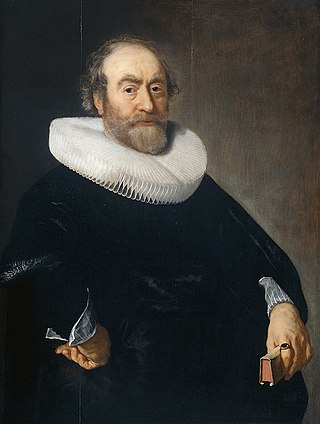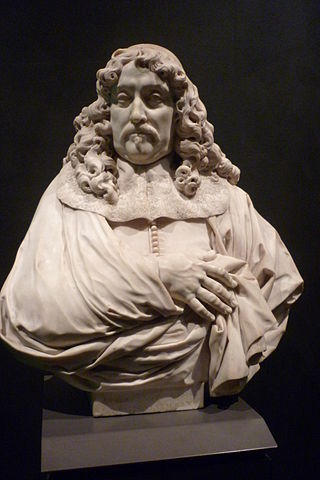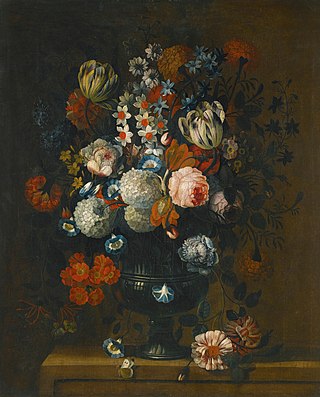
The Witten-Oorlog (Witts War) was a 1750s pamphlet war between the Dutch historian Jan Wagenaar and the Dutch lawyer and book-seller Elie Luzac.

The Witten-Oorlog (Witts War) was a 1750s pamphlet war between the Dutch historian Jan Wagenaar and the Dutch lawyer and book-seller Elie Luzac.
The main subject was whether or not the Witt brothers' execution by the people was justified and whether or not they were enemies of the state. Specifically, the pamphleteers disagreed on the wisdom of the Act of Seclusion, a secret annex in the Treaty of Westminster (1654) between the United Provinces and the Commonwealth of England in which William III, Prince of Orange, was excluded from the office of Stadtholder.
The historian Pieter Geyl claimed that the true cause of the argument was based on the restoration of the government in 1748 and Wagenaar's freshly written history of Johan de Witt in 1749. [1] A book was written about the subject in 1757, by which time the tempers had calmed down, though the parties had never agreed.
It has been speculated that the white text that was painted onto the painting by Jan Asselijn known as The Threatened Swan was done in this period. [2] The painting, which supposedly symbolizes Johan de Witt as a white swan protecting his country's eggs from an Orangist dog, was purchased for the Nationale Konst-Gallery in The Hague in 1800 based on its allegorical reference, but only later did visitors point out that the painter had died long before the murder of the De Witt brothers took place.

Johan de Witt, Lord of Zuid- en Noord-Linschoten, Snelrewaard, Hekendorp en IJsselvere, was a Dutch statesman and a major political figure in the Dutch Republic in the mid-17th century, the First Stadtholderless Period, when its flourishing sea trade in a period of global colonisation made the republic a leading European trading and seafaring power – now commonly referred to as the Dutch Golden Age. De Witt was elected Grand pensionary of Holland, and together with his uncle Cornelis de Graeff, he controlled the Dutch political system from around 1650 until the Rampjaar of 1672. This progressive cooperation between the two statesmen, and the consequent support of Amsterdam under the rule of De Graeff, was an important political axis that organized the political system within the republic.

Willem Claeszoon Heda was a Dutch Golden Age artist from the city of Haarlem devoted exclusively to the painting of still life. He is known for his innovation of the late breakfast genre of still life painting.

Pieter de la Court was a Dutch economist and businessman, he is the origin of the De la Court family. He thought about the economic importance of free competition and was an advocate of the republican form of government.

Cornelis de Graeff, often named Polsbroek or de heer van (lord) Polsbroek during his lifetime was an influential regent and burgomaster (mayor) of Amsterdam, statesman and diplomat of Holland and the Republic of the United Netherlands at the height of the Dutch Golden Age.

Andries Bicker was a prominent burgomaster (mayor) of Amsterdam, politician and diplomat in the Dutch Republic. He was a member of the Bicker family, who governed the city of Amsterdam and with it the province of Holland for about half a century. At that time, the Republic was at the height of its power.
Johan van Banchem was one of the leaders of the lynching of Johan de Witt and Cornelis de Witt on 20 August 1672. He was rewarded for this crime with an appointment as baljuw of The Hague by Stadtholder William III. After a few years in this function he was arrested and convicted for gross abuse of his office. He was sentenced to death on 26 November 1680 by the Hof van Holland, but appealed the verdict to the Hoge Raad van Holland en Zeeland. He died in jail before this appeal was finished.

De Graeff is an old Dutch patrician and noble family,

Andries de Graeff was a regent and burgomaster (mayor) of Amsterdam and leading Dutch statesman during the Golden Age.

Pieter de Graeff was a Dutch aristocrat of the Dutch Golden Age and one of the most influential pro-state, republican Amsterdam Regents during the late 1660s and the early 1670s before the Rampjaar 1672. As president-bewindhebber of the Dutch East India Company, he was one of the most important representatives and leaders of the same after the Rampjaar.

Johan de Graeff, also Jan de Graeff - patrician of Amsterdam, Free Lord of Zuid-Polsbroek - was a member of the De Graeff - family from the Dutch Golden Age. His political Position was that of the Dutch States Party.

Jacob de Graeff was a member of the De Graeff-family from the Dutch Golden Age. He was an Amsterdam regent and held the title as 20th Free Lord of Ilpendam and Purmerland.
Johan Engelbert Elias was a Dutch historian known mostly for his important work on the history of Amsterdam's regency. He is considered the father of genealogical research in the Netherlands.

Simon Hardimé (1672–1737) was a Flemish painter of mixed Walloon and Flemish descent. He is known for his paintings of flowers. He trained in Antwerp and later worked for a few years in the Dutch Republic. He then moved to London where he remained the rest of his life. His patrons included the bourgeoisie in Brussels and Antwerp and aristocrats in the Netherlands and England.

The Threatened Swan is an oil painting of a mute swan made around 1650 by Dutch Golden Age painter Jan Asselijn. The work is in the collection of the Rijksmuseum in Amsterdam in the Netherlands.

The Loevestein faction or the Loevesteiners were a Dutch States Party in the second half of the 17th century in the County of Holland, the dominant province of the Dutch Republic. It claimed to be the party of "true freedom" against the stadtholderate of the House of Orange-Nassau, and sought to establish a purely republican form of government in the Northern Netherlands.

Cornelis Sebille Roos or Cornelis Roos was a Dutch art dealer and inspector of the Nationale Konst-Gallery collection in Huis ten Bosch during the years 1799-1801

The Oranjezaal refers to a painted ballroom in the Royal palace Huis ten Bosch in the Hague. It was once, together with its neighboring Chinese room, part of the first national museum of the Netherlands founded in 1800 called the Nationale Konst-Gallery. The supervisor Cornelis Sebille Roos appointed Jan Gerard Waldorp as the first custodian and curator to receive visitors and explain the collection.

Elie Luzac was a Dutch jurist, journalist, writer of philosophical, historical and political literature, and book-seller, who was considered an important ideologue of the "democratic wing" of the Orangist movement, both after the Orangist restoration in the Dutch Republic in 1748, and during the Patriottentijd.

The Corpses of the De Witt Brothers is a c. 1672–75 oil on canvas painting by the Dutch Golden Age painter Jan de Baen, now in the Rijksmuseum in Amsterdam. It shows the dead and mutilated bodies of the brothers Johan and Cornelis de Witt hanging upside down on the Groene Zoodje, the place of execution in front of the Gevangenpoort in The Hague.

Pieter Hardimé was a Flemish painter known for his paintings of flowers. He trained in Antwerp and later moved to the Dutch Republic where he worked in The Hague. He was active as a decorative painter of flowers for wall and ceiling decorations, often in collaboration with Mattheus Terwesten.